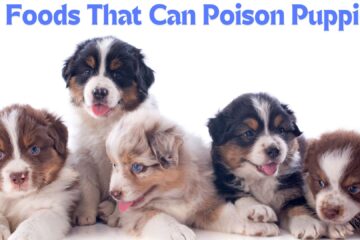As pet owners, we often worry about our furry friends getting into things they shouldn’t. From chocolate to certain plants, the list of hazardous items can seem endless. But what about ants?
These tiny critters can sometimes be found swarming around pet food, particularly during warmer months or in homes that battle ant infestations.
Understanding whether ants pose a risk to your dog if ingested with their food is crucial for ensuring their health and well-being. In this post, we’ll delve into the potential risks and safety of dogs consuming ants along with their food.
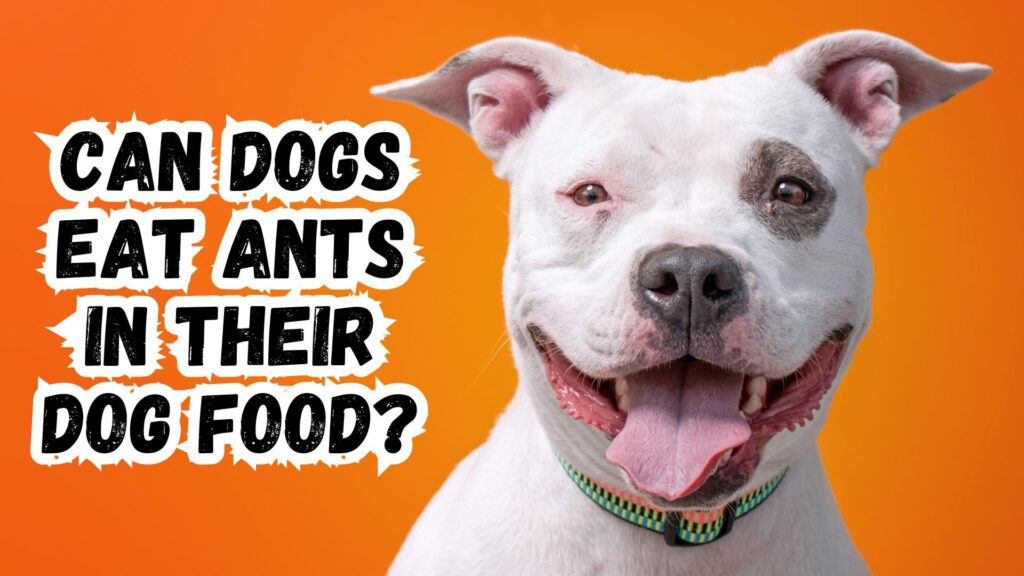
Are Ants Harmful to Dogs?
Types of Ants That Might End Up in Dog Food
The most common ants that might invade dog food include the harmless black ants and the more aggressive fire ants. Each type of ant carries different risks when ingested.
Toxic Substances in Ants
Most ants are non-toxic and do not pose a significant risk if ingested in small quantities. However, some ants, like fire ants, can be more problematic.
Fire ants attack en masse and can inject venom, which is irritating and potentially harmful if ingested in large amounts.
General Safety of Consuming Small Amounts of Ants
For the most part, consuming a few ants here and there is not likely to harm your dog. The stomach acids of dogs are quite strong, which helps neutralize the minor toxins that some ants might carry. However, the safety can vary depending on the type and quantity of ants.
Potential Health Effects of Ants in Dog Food
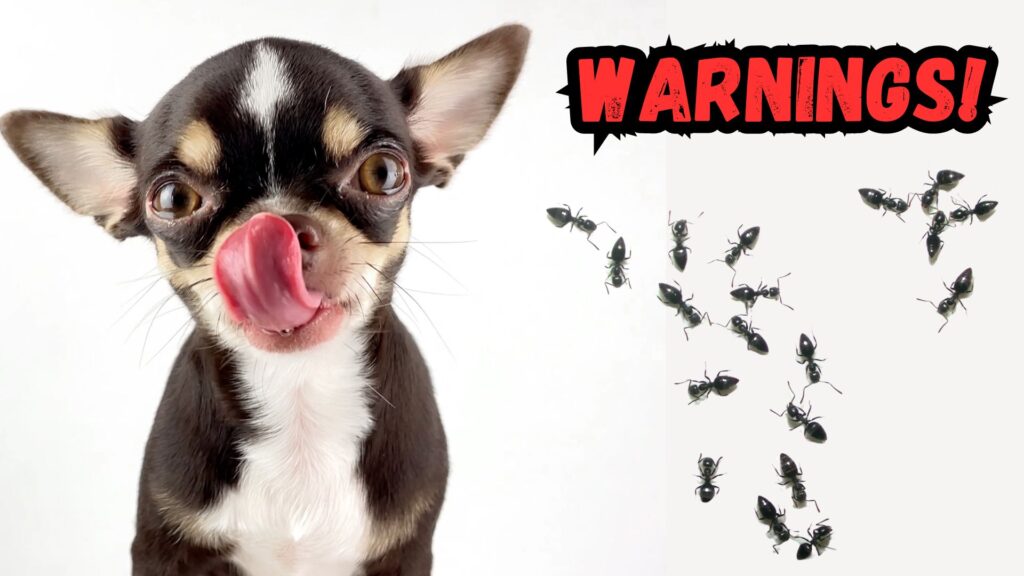
Possible Reactions
While a small number of ants in dog food is usually harmless, ingestion in larger quantities or certain types of ants like fire ants could cause adverse reactions. Some dogs might experience minor gastrointestinal upset, including vomiting or diarrhea.
Allergic Reactions
Just as humans can have allergies, dogs can also react allergically to ant venom. Symptoms of an allergic reaction can include swelling, intense itching, and discomfort.
Although rare, severe reactions (anaphylaxis) could occur, which is a medical emergency.
Dangers of Fire Ants
Fire ants are particularly troublesome due to their aggressive nature and the potent venom they inject. If a dog disrupts a fire ant mound, the ants can swarm and sting multiple times, which can lead to more severe health issues such as increased swelling, pain, and in rare cases, shock.
Monitoring Symptoms Post-Ingestion
If you know or suspect that your dog has ingested a significant number of ants, especially fire ants, closely monitor them for any signs of distress.
Symptoms to watch for include excessive drooling, pawing at the face or mouth, swelling, lethargy, or respiratory distress. If any of these signs occur, contact your veterinarian immediately.
While a few ants in your dog’s food aren’t typically cause for alarm, staying vigilant about the type of ants and their quantity is essential. Keep an eye on your pet’s reaction following such an incident and consult professional help if adverse effects arise.
By understanding these risks and preparedness, you can ensure your dog’s health and safety in dealing with these unexpected critters.
What to Do If Your Dog Eats Ants
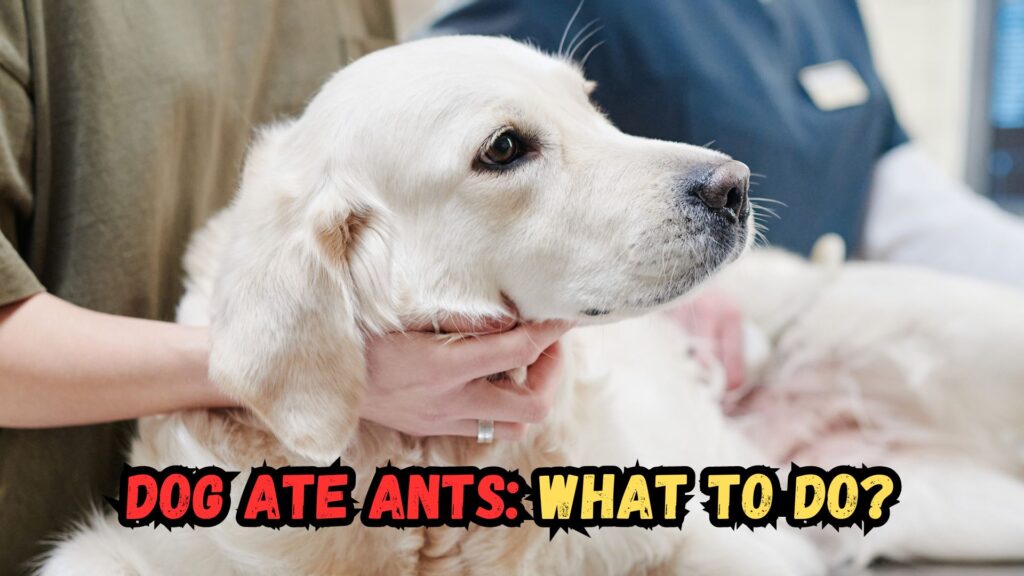
When you discover that your dog has eaten ants, it’s important to remain calm and take appropriate actions based on the severity and symptoms exhibited by your pet.
Step-by-Step Response
- Identify the Type of Ants: Try to identify whether they are harmless black ants or potentially harmful fire ants. This can guide your next steps.
- Observe Your Dog: Watch for any signs of distress such as excessive scratching, signs of pain, vomiting, or diarrhea.
- Provide Fresh Water: Encourage your dog to drink fresh water. This can help to flush out their mouth and potentially reduce the ingestion of any contaminants or irritants.
- Contact Your Veterinarian: If you suspect that your dog has consumed a large number of ants or if they show any signs of allergic reactions or distress, it’s wise to contact your veterinarian for advice.
When to Seek Veterinary Help
Immediate veterinary care is necessary if your dog exhibits severe symptoms such as:
- Swelling, especially around the face or throat
- Difficulty breathing
- Excessive drooling
- Severe agitation or discomfort
- Signs of pain These symptoms could indicate a severe allergic reaction or a toxic response, particularly if fire ants are involved.
Home Remedies and Immediate Actions
For minor reactions, such as slight gastrointestinal upset or minor irritation:
- Ice Packs: Applying a cold compress can help soothe minor swelling or pain.
- Bland Diet: Offering a bland diet (boiled chicken and rice) may ease mild stomach upset.
- Monitor Closely: Keep an eye on your dog for the next 24-48 hours for any further symptoms that might develop.
Prevention Tips
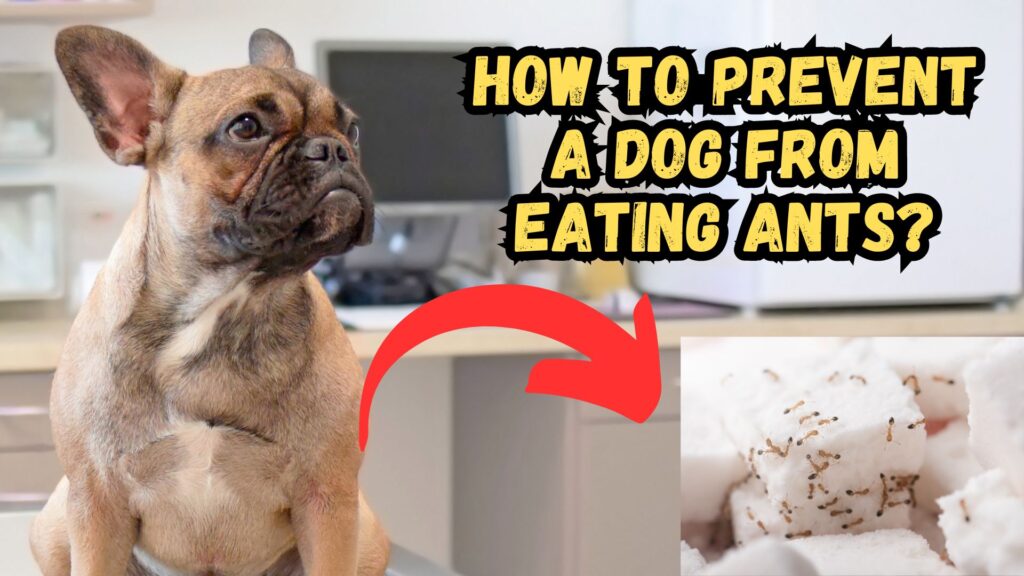
Preventing ants from coming into contact with your dog’s food is key to avoiding these issues altogether.
Strategies to Keep Ants Away from Dog Food
- Use Ant-Proof Containers: Store dog food in sealed, ant-proof containers. These containers are designed to keep out pests and maintain the freshness of the food.
- Maintain Clean Feeding Areas: Regularly clean the area where your dog eats. Leftover food can attract ants and other pests.
- Natural Repellents: Consider using natural repellents around feeding areas, such as vinegar or diatomaceous earth, which are safe for pets but deter ants.
Best Practices for Storing Dog Food
- Keep It Sealed: Always reseal your dog’s food bag or use a container with a tight-fitting lid.
- Store in a Cool, Dry Place: Avoid storing dog food in damp areas as this can attract ants and promote mold growth.
- Rotate Food Regularly: Use older food first and regularly check for any signs of infestation or spoilage.
Importance of Regular Cleaning and Pet Food Hygiene
- Daily Cleaning: Wipe down feeding areas daily to remove any food spills or residues.
- Regular Washing: Wash your dog’s food and water bowls regularly with hot soapy water.
- Scheduled Inspections: Regularly inspect storage and feeding areas for signs of pests and take action if any are found.
By following these practical and effective tips, you can help ensure that your dog’s feeding environment remains clean, safe, and free from unwanted pests like ants.
This proactive approach not only contributes to the overall health of your dog but also helps maintain a clean and hygienic home environment.
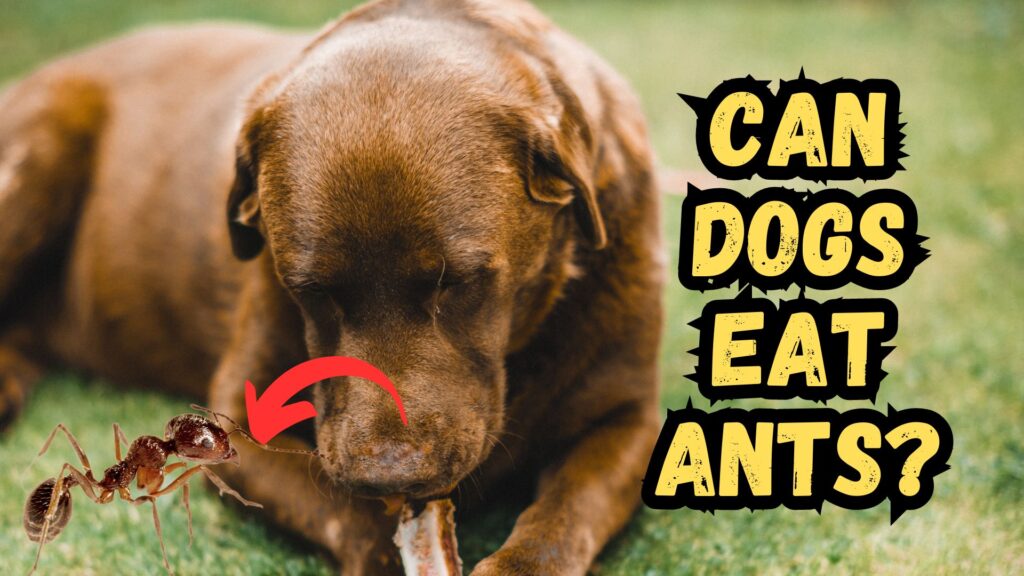
FAQ
Can Ants in Dog Food Cause Long-Term Health Issues?
Generally, the ingestion of ants is unlikely to cause long-term health issues in dogs. Most ants are harmless and even if consumed, they typically pass through the digestive system without causing significant harm.
However, certain types of ants, like fire ants, may pose more risk due to their venomous sting, and if your dog has a severe allergic reaction, it could potentially lead to more serious complications.
Always monitor your dog after such incidents and consult your vet if you observe unusual symptoms.
Are Some Breeds More Sensitive to Ants in Their Food Than Others?
Sensitivity to ants or any other allergens in dogs does not typically depend on the breed but rather on the individual dog’s immune system. However, some breeds may have more sensitive skin or predispositions to allergies, which might make them more susceptible to reactions from ant bites or stings.
Breeds with known sensitivities to various allergens might react more strongly if exposed to large numbers of ants or particularly aggressive ants like fire ants.
How Can I Tell If My Dog Is Allergic to Ants?
Signs of an allergic reaction to ants in dogs can include:
- Swelling at the site of the bite or in other areas like the face or paws.
- Hives or raised welts on the skin.
- Excessive itching or scratching.
- Respiratory distress, such as difficulty breathing or wheezing, especially if the throat or nasal passages are swollen. If you notice any of these symptoms following exposure to ants, it’s important to seek veterinary care promptly as allergies can escalate to more severe reactions.
What Are the Signs That My Dog Has Been Affected by Eating Ants?
The signs that a dog has been affected by eating ants can vary depending on the number of ants ingested and the type of ants.
Common symptoms might include:
- Mild to severe gastrointestinal upset, such as vomiting or diarrhea.
- Drooling or signs of nausea.
- Visible discomfort or distress.
- Physical reactions such as swelling or hives, particularly with fire ant exposure. Observe your dog closely if you suspect they have ingested ants, and consult a veterinarian if any concerning symptoms develop.
Can Ants Transfer Diseases to Dogs Through Their Food?
The risk of disease transmission from ants to dogs through their food is very low. Ants are not known carriers of diseases that commonly affect dogs. However, the greater risk lies in the physical irritation or potential allergic reactions from ant bites or stings, rather than disease transmission.
Always ensure that your dog’s food is stored in secure, clean containers to minimize the risk of ant infestation.


